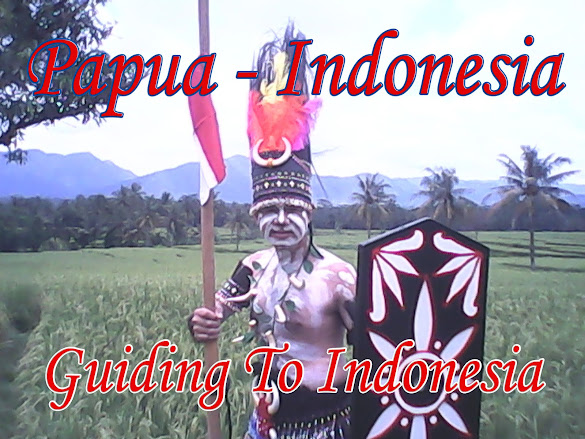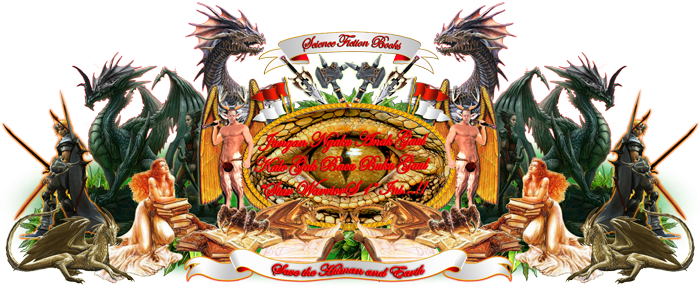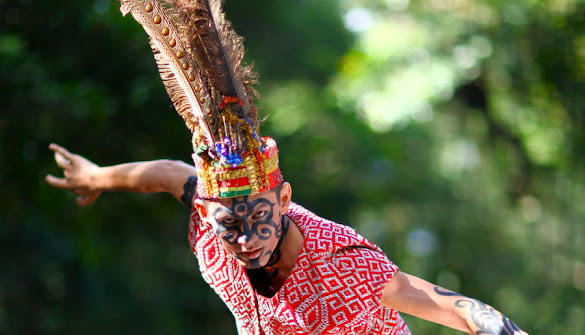West Nusa
Tenggara
The Capital City of West Nusa Tenggara Province is
“Mataram”
The
province of West Nusa Tenggara, comprises of the islands which is made up of
the island of Lombok and Sumbawa between Bali to the Sumbawa to the East,
spanning a rech about equal to that of the entire length of the island of Java.
The two major islands in this region are Lombok and Sumbawa. At present,
Hinduism is the religion embraced mostly by the Balinese population groups who
have mostly settled in Western Lombok.The indigenous people of Lombok, the
Sasaks, are predominantly Moslem. Even more so are the people of neighbouring
Sumbawa. At present, West Nusa Tenggara’s cultural make up is a composite of
those of the four main population groups inhabiting the two islands the
Balinese, the Sumbawanese and the peoples of Bima and Dompu. The region is
famous for it’s ikat hanwoven textiles. Cattle and horses are the major exports
of these islands.
West Nusa Tenggara,
which is made up of the island of Lombok and Sumbawa was once thought to be
dull and unintersting, difficult to get to and it’s peoples unfriendly. Lombok
was used for short breaks away from Bali while Sumbawa was only valued for the
cheap land route it offered to Giant Lizard Dragon(Komodo) and beyond. Many more
are discovering two enthanting islands that still retain the mystique of the
East, islands still growing with an aura of the past. The beauty of the
landscape is relativelly unspoilt, ideal countryside for trekking and those
with an adventurous spirit. Lombok has Mount Rinjani, an awe inspiring volcano
which soars to a height of 3.726 meters and Sumbawa’s Mount Tambora is credited
with the most destructive eruption in recorded history. Once held the title of
being the highest mountain in South East Asia until that fateful day in 1815
when it violently erupted, blowing it’s own head off and reducing it’s height
to it’s present more lowly 2.850 meters from sea levels. Some of the best waves
in the world are to be had in the vicinity of Taliwang and Malok beach on the
west coast and at Hu’u on the suth coast, South of Dompu.

Lombok and Sumbawa
have coastlines lined with pristine beaches and fabulous waters for
windsurfing, surfing, game fishing, and underwater activities. To South side
has a South Coast of extinct volcanic peaks that plunge straight into the
Indian Ocean. The islands have thankfully not yet leapt into our present day
reality of traffic jams and smog. Traditional carts pulled by small ponies
still seem to be the preffered method of transport. Even in streems beside the
main street of Mataram, the provincial capital, we could find drivers washing
their steeds in sparkling mountain streams. And also the Lombok is a small
island slightly smaller than Bali with it’s white virgin Beaches, cool mountains,
wide savannas and old aged tradition.
Lombok has a chain of volcanic mountains in the Northhern half of the
island. Hindu is the religion embraced mostly by Balinese population groups
live mainly in the Western part the island. Two thirds of the 3.6 million
population live on Lombok which the indigenous people of Lombok are Sasak which
predominantly Moslem. The Sasak’s people a group of indigenous people who
inhabit various parts of the island, some of two still live a traditioanal
lifestyle. In Western of Lombok, descendants of Balinese who sailed over the
Lombok strait centuries ago, still reside. On Lombok the influence of Javanese,
Hindu and Moslem cultures could clearly be noted in the traditions of the
society.
On Sumbawa, the two
prominent ethnic groups are the samawa who mainly reside in the Sumbawa
district (East) and the Mbojo who live in the Bima and Dompu districts (West).
These groups both share a beliefe in Moslem, but are differentiated by their
local languages, customs and traditions. Also Hindu, Moslem and Christian
influences are clearly reflected in the architecture of Lombok’s pictureque
landscape but nowhere more so than in it’s four-part capital, main city and
former port. Despite the different regions and belief systems of this diverse
populations, they live side by side in mutual respect and harmony. The
diversity of peoples provide the region with a rich tapestry of dialect and
diverse range of languages, traditional danse, music and rituals. Sumbawa’s
influences seem to have come from migrating Moslems from South Sulawesi.
Mataram is the capital of the provincial
government.
The island of
Lombok in Indonesia is well known for it’s handicrafts and traditional
craftwork, in particular pottery, basket-making, and weaving. The three villages
of Banyumulek, Masbagik Timur, and Penujak represent the island’s major pottery
producing areas. Here, where pottery making is their main source of income, the
village women have been producing pottery since decline of the East Javanese
Hindu Kingdom of Majapahit in the early part of 16th century.Since
1988, the Lombok Crafts Project has been assisting the womwn potters of
Banyumulek, Masbagik Timur, and Penujak, to improve their standard of living
through technical and marketing assistance. This bilateral development project
between the Governments of the Republic of Indonesia and New Zealand is
suported by the Indonesian Department of Industry.in each of the three
villages, the Project has funded the building of work shelters and showrooms.
In West
Nusa Tenggara we could visit Maruya Floating Palace-Meruya Floating Hall, the
main market Sweta, The Royal Kingly Garden of Narmada, Lingsar Temple, Gili
Meno and Gili Air (we could swim, snorking, sunbathing), Lendang Bayur a
typical morning market, Pusuk for a fresh air and beautiful view of the valley,
Sukarara the handweaving village, Penujak Pottry village, Sengkol or Rambitan
the traditional Sasak Village still retain it’s age old customs, Mataram,
Ampenan, Cakranegara, Meru Temple, Pusuk Monkey forest for beautiful view over the valley down to the
western coastside of Lombok, Sendang Gile waterfall with backdrop view againts
Mount Rinjani, Masbagik and Loyok as pottery village known for it’s bamboo
handicrafts, Tanjung Luar the biggest fishermen’s village in Lombok.
Mataram
in the capital of West Nusa Tenggara which has in the past decades joined with
Ampenan, the port on Lombok Strait, and Cakranegara to become the province’s
biggest urban complex.At around the beginning of the 18th century,
Mataram was the residence of the crown prince of Singasari, or Karang Asem in
Southern Bali. The ruler himself had his seat in Cakranegara. The royal palace
no longer exists, but many of the old temples and pleasure gardens are still
there.
Lombok’s
biggest Balinese temple is the Pura Meru in Cakranegara. Dedicated to the Hindu
trinity of Shiva, Brahma and Vishnu, it was built in 1720 and has three
courtyards. Three Meru Pagoda, like place of worship, stand in a line from
north to south in the innermost courtyad. The one on the north is dedicated to
vishnu and has a roof with nine tiers. The central meru is dedicated to Shiva
and has 11 tiers on it’s roof. The southern, most one is for Brahma and has a
roof of seven tiers.Nearby is Taman Maruya. Once part of the royal palace, it
has an artificial lake set in the middle of a park. A raisen walk leads from
the side of the pond to a pavilion built in the middle of the lake.
The
traditional women dresses are Lamung from fine and thin linen materials, Tope
Belo, kind of long lady's skirt, Tope Pene, short skirt which is used outside
Tope Belo.
In their shoulders usually put laid aside Kida Sanging, and their hair adorned
with Sua'.
The traditional men dresses are usually used for Semawa society wedding
ceremony.
They wear Gadu dress, long frousers (saluar), Tope Pene, belts and slipped
creese with Kida Sanging hilted.
Bima and The Royal
Palace. The capital town of Bima regency and also the connecting port of
eastern, central and western Indonesia. The restored former Sultan’s Palace
containing historical items such as the royal crown, and kris with gem studded
gold and ivory hilts, provides interest for tourists. The former palace in the
town of Bima is about all that is left of the Bima sultanate. The building is
now become a museum. Dara, a village two kilometers from the town of Bima in
eastern Sumbawa, is believed to have been the seat of the ancient Bima Kingdom.
Good beaches are found among other places at Talolai and
Hangawera, north of Bima, Lunyuk on the south coast of Sumbawa. The top now a
big caldera with two colored lakes. From the rim of the crater, the view of
rest of the island, the sea and Mount Rinjani on the island of Lombok in the
distance is breathaking. The mountain occupies almost the entire Sanggar
peninsula.
Ampenan, the western end of the foursome, is a colorful
old Harbor. It was once Lombok’s main port and a vital link in the famous spice
route. Check out the Arab Quarters where the descendants of wandering narrow
streets.
The objects of interests are:
West Nusa Tenggara
Museum, Mayura Park, The Meru Temple, Narmada
Park, Lingsar, Pura
Lingsar, Suranadi, Pura
Agung Mount Sari, Senggigi Beach, Senggigi
Resort, The Gili Islands, Malimbu & Mangsit Beach, Pusuk, Gili Nangu, Gili
Genting, Batu Bolong, Sire
Beach, Mount Rinjani, Lake
Segara Anak, Mount Pengsong, Bangko-Bangko, Bungin Island, The
Central Lombok, Sukarara, Banyumulek, Masbagik Timur, Penujak, Kuta Beach, Seger
Beach, Gerupuk Beach, A’a
Beach, Mawuh Beach, Selong
Belanak Beach, Sengkol & Pujut, Sade, Sengkol, Pujut & Rambitan, The Otak Kokok Gading, The
Jeruk Manis Waterfall, The Loyok Central Handicrafs, The Tete Batu, Moyo
Island, Sapit Village, Semalun
Lawang, Biraq, Lenek, Pringgasela, The
Sentani Wooden Doll, Dalam Loka, The
Kaliantan Beach, Grave of Selaparang, Hu’u Beach, Sumbawa, Tepas, Maluk Beach, Lebung
Taliwang, Poto Batu Beach, Semongkat, Dompu, Calabai, Doro
Bata, Mount Tambora, Donggo
Village, Mada Panga, Mount
Sangiang, Sape, Raba
Dompu, Mawo Maria.
For complete information you
could have on the “Text Book Guiding To Indonesia” By F. I. Fatrick.




























